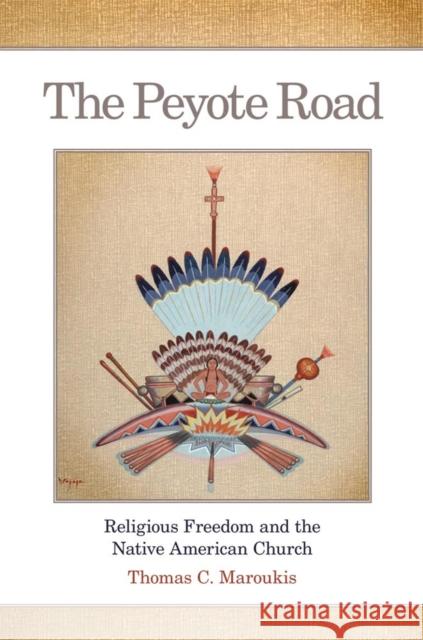The Peyote Road, 265: Religious Freedom and the Native American Church » książka
The Peyote Road, 265: Religious Freedom and the Native American Church
ISBN-13: 9780806143231 / Angielski / Miękka / 2012 / 296 str.
The Peyote Road, 265: Religious Freedom and the Native American Church
ISBN-13: 9780806143231 / Angielski / Miękka / 2012 / 296 str.
(netto: 78,60 VAT: 5%)
Najniższa cena z 30 dni: 82,03
ok. 30 dni roboczych
Dostawa w 2026 r.
Darmowa dostawa!
Despite challenges by the federal government to restrict the use of peyote, the Native American Church, which uses the hallucinogenic cactus as a religious sacrament, has become the largest indigenous denomination among American Indians today. "The Peyote Road" examines the history of the NAC, including its legal struggles to defend the controversial use of peyote.
Thomas C. Maroukis has conducted extensive interviews with NAC members and leaders to craft an authoritative account of the church s history, diverse religious practices, and significant people. His book integrates a narrative history of the Peyote faith with analysis of its religious beliefs and practices as well as its art and music and an emphasis on the views of NAC members.
Deftly blending oral histories and legal research, Maroukis traces the religion s history from its Mesoamerican roots to the legal incorporation of the NAC; its expansion to the northern plains, Great Basin, and Southwest; and challenges to Peyotism by state and federal governments, including the Supreme Court decision in" Oregon v. Smith." He also introduces readers to the inner workings of the NAC with descriptions of its organizational structure and the Cross Fire and Half Moon services.
"The Peyote Road" updates Omer Stewart s classic 1987 study of the Peyote religion by taking into consideration recent events and scholarship. In particular, Maroukis discusses not only the church s current legal issues but also the diminishing Peyote supply and controversies surrounding the definition of membership.
Today approximately 300,000 American Indians are members of the Native American Church. "The Peyote Road" marks a significant case study of First Amendment rights and deepens our understanding of the struggles of NAC members to practice their faith."
An up-to-date history of the Peyote faith that emphasizes Native perspectives Despite challenges by the federal government to restrict the use of Peyote, the Native American Church, which uses the hallucinogenic cactus as a religious sacrament, has become the largest indigenous denomination among American Indians today. The Peyote Road examines the history of the NAC, including its legal struggles to defend the controversial use of Peyote. Thomas C. Maroukis has conducted extensive interviews with NAC members and leaders to craft an authoritative account of the churchs history, diverse religious practices, and significant people. His book integrates a narrative history of the Peyote faith with analysis of its religious beliefs and practices-as well as its art and music-and an emphasis on the views of NAC members. Deftly blending oral histories and legal research, Maroukis traces the religions history from its Mesoamerican roots to the legal incorporation of the NAC; its expansion to the northern plains, Great Basin, and Southwest; and challenges to Peyotism by state and federal governments, including the Supreme Court decision in Oregon v. Smith. He also introduces readers to the inner workings of the NAC with descriptions of its organizational structure and the Cross Fire and Half Moon services. The Peyote Road updates Omer Stewarts classic 1987 study of the Peyote religion by taking into consideration recent events and scholarship. In particular, Maroukis discusses not only the churchs current legal issues but also the diminishing Peyote supply and controversies surrounding the definition of membership. Today approximately 300,000 American Indians are members of the Native American Church. The Peyote Road marks a significant case study of First Amendment rights and deepens our understanding of the struggles of NAC members to practice their faith.Thomas C. Maroukis is Professor and Chair of the History Department at Capital University, Columbus, Ohio. He is the author of Peyote and the Yankton Sioux: The Life and Times of Sam Necklace.











